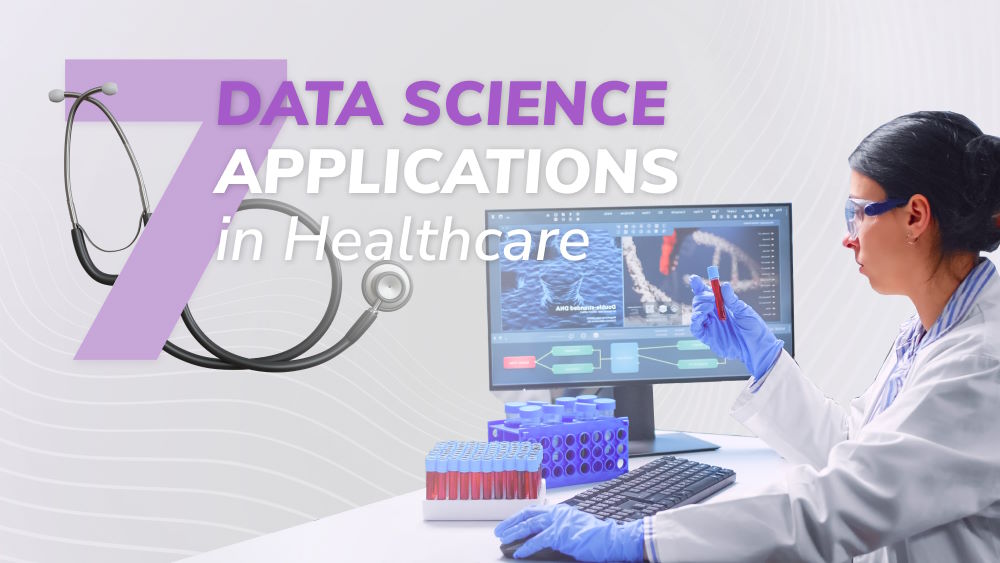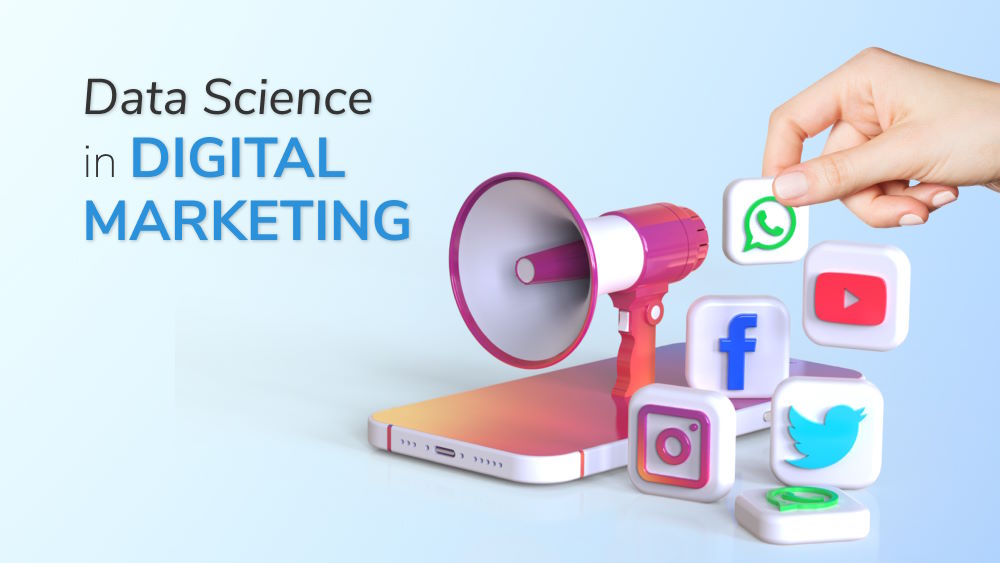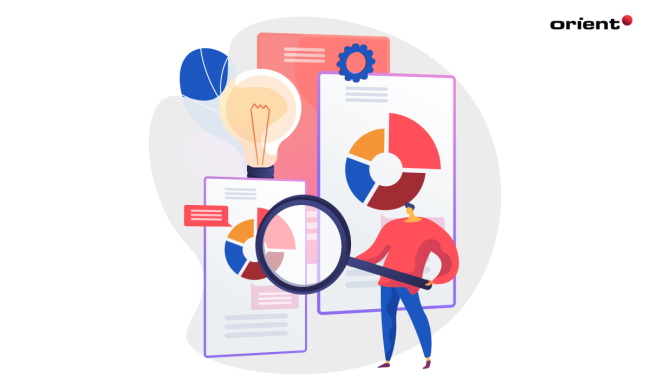Data Science Frameworks: Turning Data into Valuable Insights
Organizing, cleaning, and interpreting data barely relying on human effort is considered a time-consuming and costly task. However, with the advent of data science, teams can now work faster and smarter instead of harder. Discover how can it be with the article below.

Øyvind Forsbak8 min read

Content Map
More chaptersData science allows companies to gain valuable insights and make informed decisions. To achieve these outcomes, companies typically hire in-house or outsourced data science experts to transform raw data into actionable insights. Learning about data science frameworks and tools can help you choose the best team for the job.
Find out what a data science framework is and how data science professionals use it for data preparation and machine learning tasks.
Key Takeaways:
- Data science teams use frameworks to perform various data science processes, such as data cleaning and visualizing.
- Data science frameworks help data science teams save time, improve collaboration, and uncover patterns and insights.
- Some of the most popular data science frameworks include TensorFlow, Pandas, Keras, Seaborn, and Scikit-learn.
What Is a Data Science Framework?
A data science framework refers to a collection of tools and libraries designed to help a data science team discover, collect, organize, clean, and interpret data. Data science frameworks typically include tools and libraries for:
- Data collection and data acquisition
- Data visualization
- Statistical analysis
- Building machine learning models
- Numerical computing
- Data mining
- Building neural networks
- Data preprocessing
Python and R are the two most popular programming languages for developing and using data science frameworks. Python is an object-oriented programming language usually used for web, mobile, and desktop app development, while R is a language utilized for statistical computing and data visualization. But why these two programming languages?
First, Python is beginner-friendly, making it accessible to data scientists who are not programmers. Secondly, Python has scientific computing mathematical functions, including exponential, trigonometric, and power functions. Lastly, R is designed for statistics and numerical computation, offering various data-specific packages and visualization tools, as well as supporting statistical models.
Why Are Data Science Frameworks Important?
There are many reasons why frameworks are important in data science. Due to their pre-packaged nature, they enable computer science teams to work faster, smarter, and more efficiently. Furthermore, they offer solutions for each step of the data science lifecycle, from data capturing and cleaning to data exploring to visualizing.
Data science frameworks can help teams:
Save Time
Although data scientists are tech-savvy, they’re not all programmers. For this reason, data science tools are a time saver, as they eliminate the need to manually code software components. Instead, teams can choose the software they need to perform their data science tasks.
Also, teams can use data science frameworks to automate various processes. For instance, data analysts are often responsible for cleaning messy data. However, this task can be very time-consuming when done manually. To help save time, teams can use data-cleaning tools to automate some processes, such as resolving dependencies.
Improve Collaboration and Communication
Data science is a highly collaborative field. Teams often include people who specialize in different disciplines, such as analytics, coding, algorithms and models, databases, and big data processing. Some outsourced development teams and data scientists also work remotely, collaborating asynchronously, increasing the potential for misunderstandings and communication delays.
To foster a collaborative environment, teams can use services like GitHub to import their data science tools into a central repository and from multiple data sources. From there, they can collaborate on the same data science projects. They can also create branches, allowing each team member to work and experiment on specific disciplines in isolation before incorporating them into the CI/CD pipeline.
Uncover Insights and Patterns
Data science frameworks are the most efficient way to develop and deploy ML and deep learning models. Once data is cleaned, organized, and assessed, teams (typically machine learning engineers) build models to identify trends and patterns in data sets as well as predict potential future outcomes.
These solutions contain pre-built tools, which enable teams to create supervised and unsupervised learning algorithms. This flexibility is essential in challenging situations, such as when unlabeled data (data with no unique identifiers) cannot be converted into labeled data. When this happens, teams must use an unsupervised learning algorithm to derive insights.
At Orient Software, we use advanced statistical methods and techniques to analyze data. Through predictive learning, machine learning models, and data visualization, we discover underlying trends and patterns to help guide your decision-making process. If you’re considering outsourcing your data science, our data science solutions can aid you greatly in solving complex problems and gaining valuable business insights.
Top 5 Data Science Frameworks
There are many types of data science frameworks out there. Some are general, offering various features in one framework, while others serve a specific purpose. Some serve certain industries, such as how predictive analytics tools are used for data science in eCommerce. Being familiar with these frameworks can help you assess if a team uses the right tools for the job.
Here are the top 5 data science frameworks in use today.
TensorFlow

TensorFlow, developed by Google and released in 2015, is an open-source library for machine learning. TensorFlow has several machine learning and deep learning models, which data scientists use to train and run deep neural networks. Once trained, these neural networks can perform tasks like image recognition, machine translation, and natural language processing.
In 2019, GE Healthcare used TensorFlow to train a neural network to identify anatomy during a brain magnetic resonance imaging (MRI) exam, improving speed and consistency. Airbus has also used TensorFlow to extract information from satellite images, identifying landscape changes caused by natural disasters.
Pandas

Pandas is a Python library for managing data sets. It has built-in functions to perform data analysis, data exploration, and other data science process tasks.
Pandas are often used for managing big data, as they can work with different data sets, such as relational database tables, JavaScript object notation (JSON) files, and Excel files. Any data read by Pandas is converted into a proprietary data type called DataFrame, which helps ensure data consistency. With Pandas, a data scientist can perform tasks like data cleansing, data manipulation, visualizing, normalizing, and inspecting.
Keras

Although TensorFlow can create deep learning models, the process can be overwhelming for beginners.
The Keras Python library, which can run on top of Tensorflow, is designed to address this issue. Keras has a user-friendly interface, requires fewer steps to implement common code, and provides context around errors. These accessibility features allow data scientists to build and deploy deep learning models in less time.
Seaborn

Seaborn is a data visualization library for the Python programming language. Data scientists use Seaborn to create intuitive and interactive data visualizations. It is an effective tool for communicating insights to a non-technical audience, particularly decision-makers who rely on data. Seaborn can generate various visualizations such as heat maps, bar plots, scatter plots, and line plots.
Data science teams who use Seaborn (or matplotlib, which Seaborn is based on) can produce attractive and informative data flow graphs. At Orient Software, we use data visualization tools like Seaborn to present our findings so that you can quickly understand your data and make informed decisions. Our comprehensive reports leverage historical data to increase the accuracy of your decision-making processes.
Scikit-learn

Scikit-learn is one of the best-known machine learning libraries for Python. It supports both unsupervised and supervised machine learning (ML) so that data science teams can identify trends and patterns in complex data sets. Scikit-learn also comes with other well-known libraries, including NumPy and SciPY. Data scientists who already use those libraries will quickly understand how Scikit-learn works.
Data science teams can use machine learning models created by Scikit-learn for all kinds of data science applications. For example, a real estate agent could use Scikit-learn to predict the price of houses in a specific region, a type of regression analysis (Estimate the solidness/strength of a relationship between two variables). Data science in Fintech is another field that is reshaping financial decision-making.
What to Look for in a Data Science Framework
As a client, you’re not responsible for choosing data science tools and frameworks. However, it is worth knowing what makes for a good one. Why? So, you can evaluate the quality of the tools that your team uses. Like most software solutions, the best data science frameworks have:
- Strong documentation and extensive community support: This includes comprehensive user guides and training manuals, community groups, forums, and regularly updated blog posts from industry experts.
- Performance and scalability: Ensure that any frameworks can scale as your data processing needs grow, especially if you plan on launching a new application or releasing a major update.
- Relevance to Your Data Science Project Needs: Are your team’s tools and frameworks relevant to your project? They should be able to explain the purpose of each tool and the outcomes that each tool aims to achieve.
Frequently Asked Questions
Can a Data Science Project Be Outsourced?
Yes, it can be outsourced to data science companies. If you need some help with your project, then feel free to contact Orient Software.
Which Other Languages Are Popular for Data Science?
R is another language that data scientists use for data science projects. Julia and Scala are also used for building data science applications.
Is Python Only Used for Data Science?
No, Python is used for machine learning, web development (Django), web applications (Flask), app development, data science projects, scientific computing, etc.
Is SQL a Data Science Framework?
No, SQL is not a data science framework. It’s a database query language for structured queries on relational databases. So, what are the best Python frameworks for Big Data Analysis?
Make Informed Decisions with the Right Data Science Frameworks
Data is a powerful asset. When used correctly, it can reshape your decision-making and how you run your business. Most importantly, it can reveal trends and patterns that could help your business be more productive, customer-focused, and competitive.
Of course, you need a team that uses the right tools and frameworks to help you achieve your business objectives. At Orient Software, our data science services transform your raw data into valuable insights, enabling you to make better decisions.
Contact us and see what our data science solutions can uncover.






